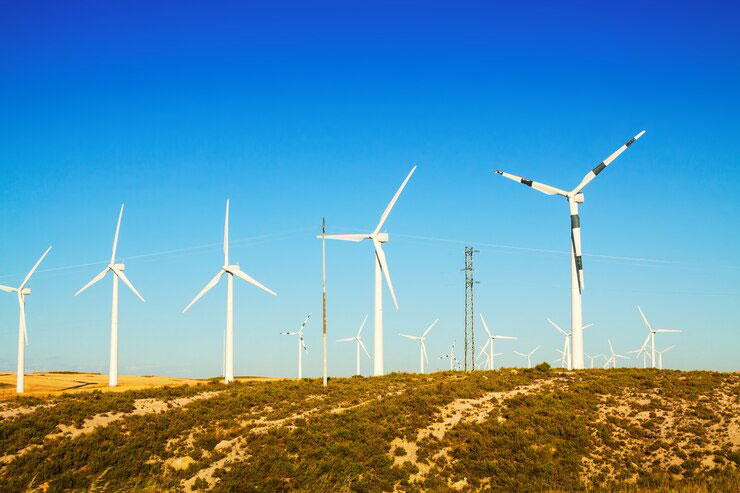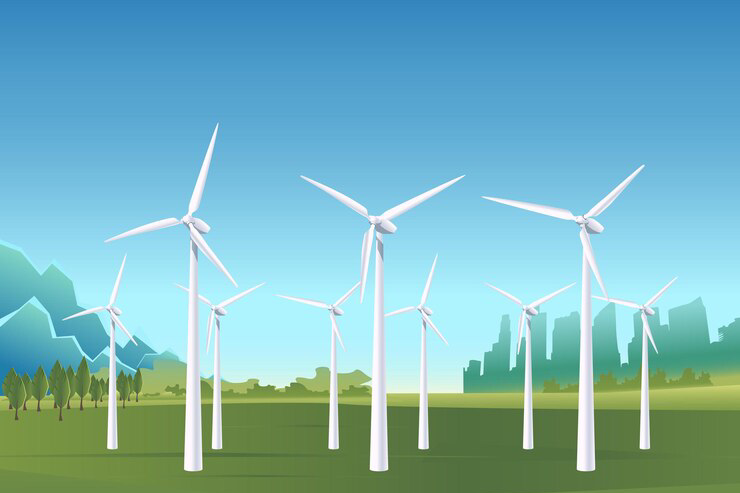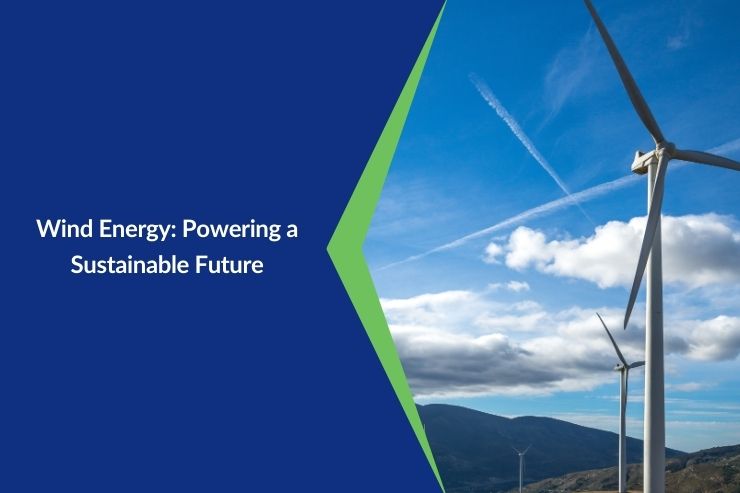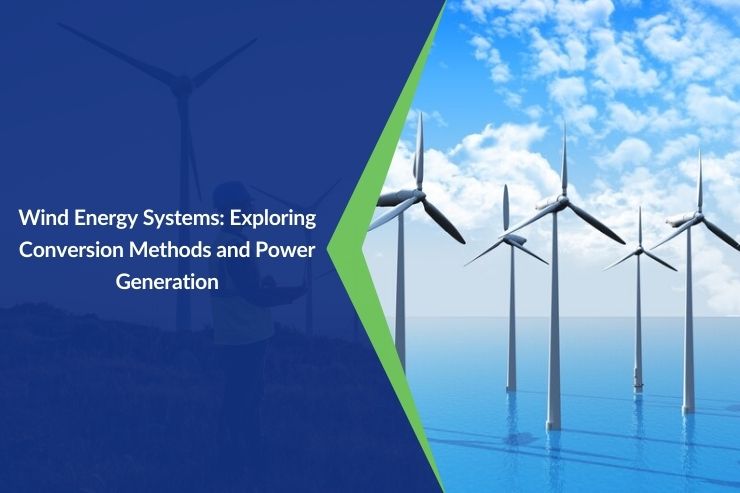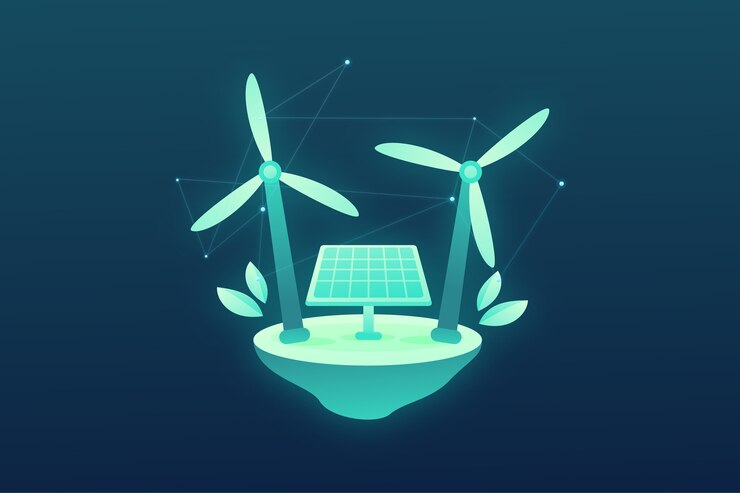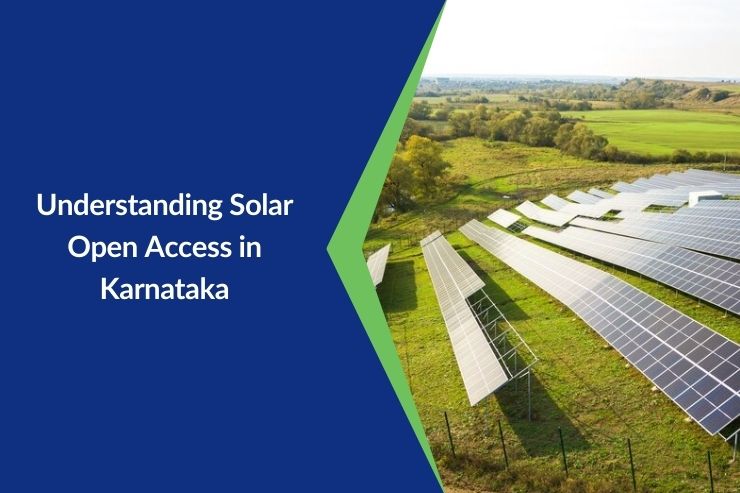The adoption of wind energy plays a role in the transition towards sustainable energy sources. Nations are working towards decreasing their dependence on fuels and addressing climate change with wind power emerging as an alternative. This piece delves into aspects of wind power projects exploring their advantages, different variations and potential impacts in India.
How Wind Power Works?
Wind energy initiatives involve the utilisation of wind turbines to generate electricity. The process commences with blades that capture the energy of the wind. As the wind blows, it sets these blades in motion, consequently propelling a generator through a shaft to convert this energy into power.
A standard renewable energy wind turbine comprises three components – rotor blades for capturing the winds kinetic energy, a shaft for transferring this captured energy to the generator and a generator responsible for producing electricity.
Also Read – wind turbines Power Plant
Benefits of Wind Power Project
Environmental Benefits
Wind power projects play a role in lowering greenhouse gas emissions. Unlike fossil fuel plants, wind turbines do not release carbon dioxide or other harmful pollutants into the atmosphere, thereby improving air quality and positively impacting the environment. Moreover, by harnessing the power of the wind, wind energy contributes to resource conservation. However, the expenses for setting up and maintaining these systems are increased due to the conditions and the need for specialized equipment.
Economic Benefits
Initiatives in wind power offer advantages. They generate job opportunities in the manufacturing, installation, maintenance, and operation of wind turbines. Investing in wind power projects stimulates growth by attracting international investors. Additionally, wind energy is cost-effective due to expenses compared to traditional power plants.
Social Implications
Wind power initiatives empower communities with a sustainable energy source, promoting energy independence and reducing reliance on imported fossil fuels. Community-led wind projects can establish revenue-sharing models that benefit residents financially from the energy fostering community engagement and ownership.
Types of Wind Power Projects
Onshore Wind Farms
Located on land onshore wind farms are the common type of wind power projects. They offer advantages such as installation and maintenance costs compared to installations. Onshore wind farms can be easily integrated into existing electricity grids making them a practical choice for regions. However, they may face challenges, like land use conflicts and noise concerns.
Offshore Wind Farms
Offshore wind farms are situated in bodies of water in oceans or large lakes. These projects benefit from more consistent wind speeds, which results in increased energy production. Constructing wind farms on a scale can significantly contribute to energy generation. However, the costs for installation and maintenance are higher due to the environment and the necessity for specialised equipment.
Small-Scale Wind Turbines
Small-scale renewable energy wind turbines serve both commercial purposes by supplying power to homes, farms or small businesses. They offer advantages such as energy bills and increased energy independence. Small turbines can be particularly beneficial in areas with access to the primary power grid, providing individuals and businesses a means to support the transition towards renewable energy.
Future Outlook and Opportunities
The future prospects for wind power projects in India look promising, with projections indicating an increase in wind energy capacity in the years to come. Expected advancements in technology, such as turbine designs and enhanced grid integration, are set to drive this expansion. The wind power sector presents an opportunity for collaboration and investment, offering prospects for stakeholders.
Frequently Asked Questions (FAQs)
What is the current status of wind power projects in India?
India has made advancements in the wind power industry and has experienced an increase in installed capacity in recent years. Currently, India is recognised as a leading nation in wind energy production. The government has set targets to enhance further wind power capacity highlighting energy as a key component of the country’s energy strategy.
How does India compare globally in terms of wind energy production?
India is among the five countries worldwide that generate wind energy. With its growing installed capacity, India leads the way in harnessing wind power on a scale. Favourable geographical conditions and supportive government policies have contributed to this progress, positioning India as a player in the global wind energy market.
How do wind power projects benefit local communities?
Wind power projects benefit communities by creating jobs through employment opportunities in the construction, maintenance, and operation of wind turbines.
What are the environmental impacts of wind power projects?
Compared to fossil fuels, wind power plants and wind energy projects significantly positively impact the environment. They do not produce greenhouse gas emissions or air pollutants contributing to air and the fight against warming. However, there are concerns about their impact on bird and bat populations due to the noise generated by turbines.
How can individuals or businesses get involved in wind power projects in India?
Individuals and businesses have opportunities to participate in wind energy projects. They can invest in small-scale wind turbines for commercial use, leading to cost savings on energy bills and supporting energy generation. Additionally, they can join community-based projects. Businesses may also explore partnerships with wind power companies and invest in energy funds to help advance the growth of the wind energy industry.

